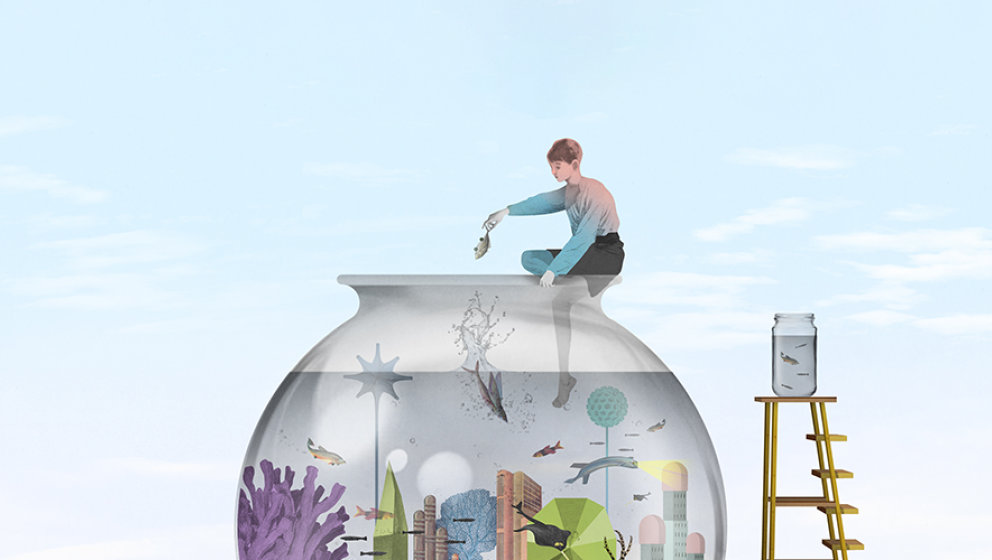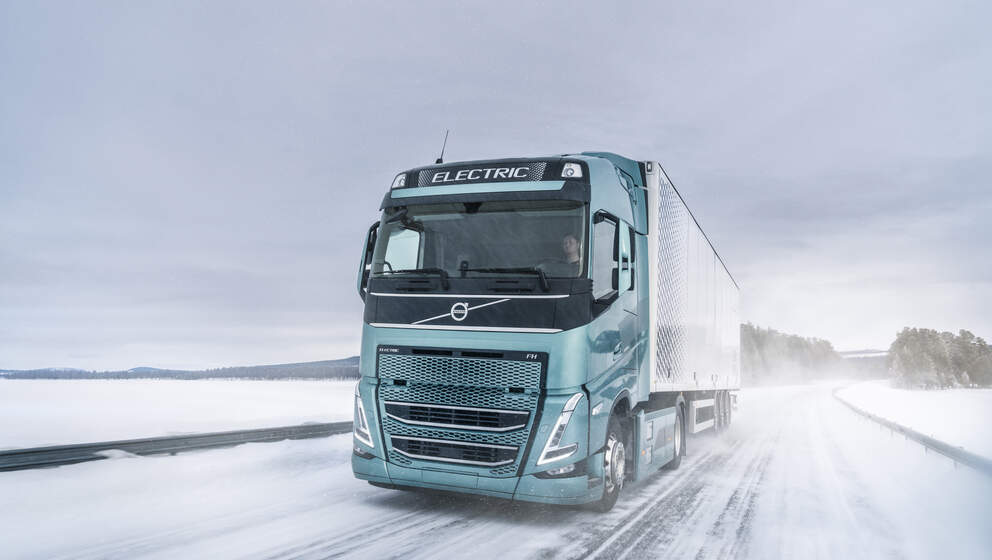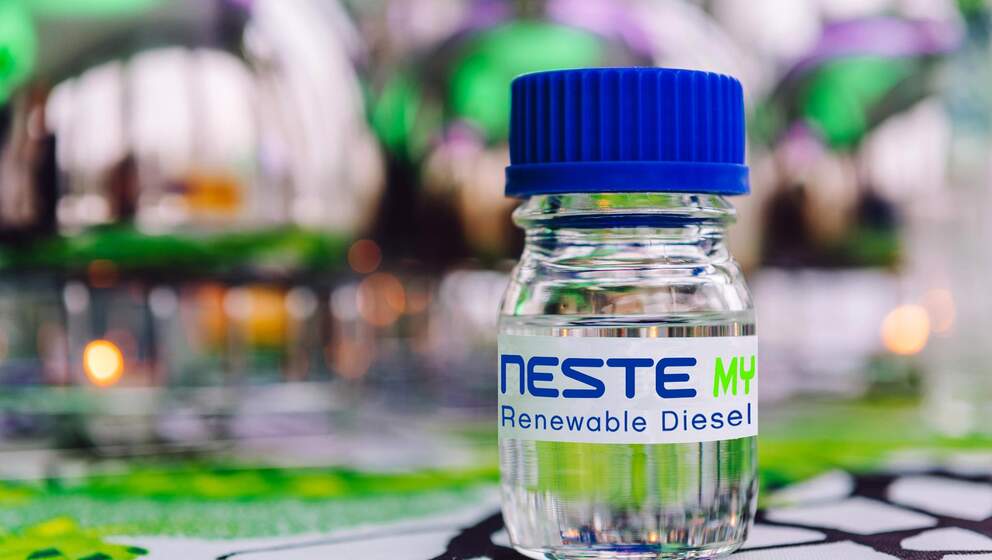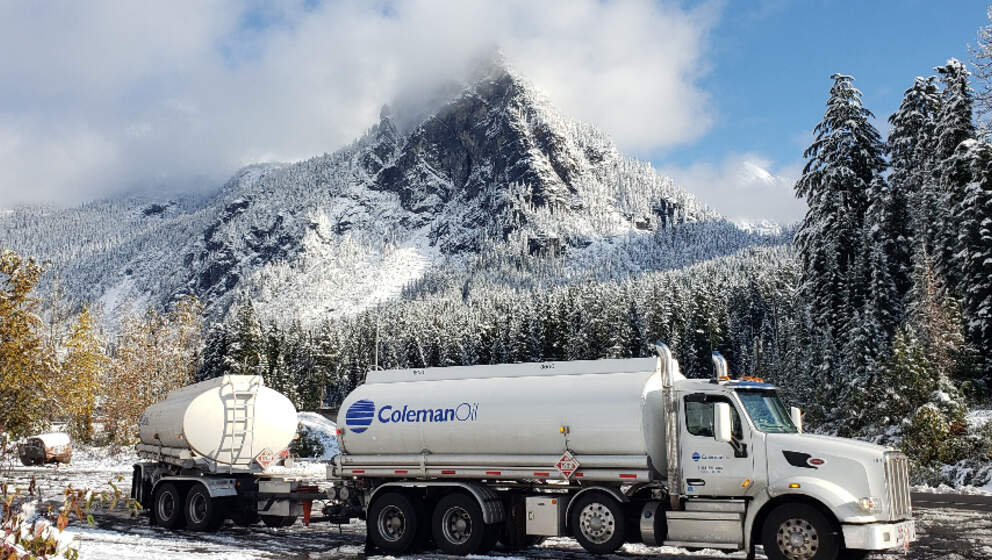Transportation
8.10.2020
Making transportation sustainable is the transport revolution we need
What’s the best way to handle a big transition? Be a part of it. Here’s how the pandemic, consumers and legislators are adding pressure to make the transportation industry more sustainable – and how companies can act now to make green transport their competitive advantage while fighting climate change.
Expect to learn:
How massively the transportation industry contributes to climate change
Why consumer expectations towards transportation are now rapidly changing
What policies are coming up to decarbonize transportation
What businesses can do now to make sustainable transportation a competitive advantage
2019 was the year the world finally woke up to the global climate emergency. As forests burned, carbon emissions rose and the US announced its plan to leave the Paris Climate Agreement, the drum of climate emergency grew louder and louder.
Flygskam (flight shaming) became the word that summed up the year, popularized by the Swedish activist Greta Thunberg who inspired millions to join climate protests worldwide. The era of idolizing a cosmopolitan lifestyle filled with overseas weekend trips and sky-high flight miles was over. In an instant, swapping planes for trains became a mainstream travel trend, as we started to feel guilty about unnecessary flights, scorning friends and influencers for unsustainable travel habits.
Forget about flygskam – should we start talking about transportskam?
In forerunning Sweden, however, a new discussion was already cooking up. As one of the country’s biggest newspapers asked: If we’re so concerned about people flying, why are we not focusing on goods moving around? Forget about flygskam – should we start talking about transportskam?
Then came the coronavirus, and transportation became a very palpable topic all over the world. While humans stayed inside, the need to move goods around the world skyrocketed. As the New York Times put it in April: “Just a few weeks ago, many people would have been hard-pressed to talk about the nation’s supply chain. But with shortages of protective gear for medical workers and basics like toilet paper and hand sanitizer, the inner workings of transporting goods - - has taken on new importance.”
Through unusual circumstances, we were confronted with the stark reality of what kind of system we had created. It also placed the environmental impact of transport front and center.
And even as the world eventually recovers from the pandemic, the signs are clear: consumers, investors and legislators are making sure that the focus on revolutionizing transportation is here to stay.
But just how big is the climate impact of transportation that we aim to mitigate?
How big is transport’s climate impact?
Transport is one of the biggest contributors to climate change, and the fastest-growing source of global emissions.
According to the World Resources Institute, transport emissions – meaning road, rail, air and marine transportation – accounted for over 24 percent of all global CO2 emissions in 2016. What’s even more worrying, the sector’s emissions are rising at a time when they need to go down, WRI states.
Consider the United States, for example:
2016 saw a historical shift in greenhouse gas makeup in the US: For the first time in over 40 years, the transportation industry replaced the electric power sector as the country’s biggest source of CO2 emissions, according to the U.S. Energy Information Administration.
Worldwide, the trend is similar: As incomes rise and infrastructure improves in developing and emerging economies, demand for transport is expected to increase at a speeding rate in the next decades, according to a 2018 transport report by the Intergovernmental Panel on Climate Change (IPCC).
Road transport accounts for 72 percent of global emissions from transport.
And where do those transportation-based emissions come from, specifically?
The biggest contributor, accounting for 72 percent of global emissions from transport according to the same IPCC report, is road transport. That includes passenger cars, buses and light and heavy-duty trucks. Moreover, since the 1970s, emissions from transport have increased at a faster rate than for any other energy end-use sector, and road transport is responsible for around 80 percent of that massive increase.
The good news is that if we use all short- and long-term solutions available, it’s still not too late to decarbonize road transport quickly enough to meet the goals of the Paris Climate Agreement.
That’s also what the public is increasingly demanding.
How are customer expectations for transport changing?
Already, consumers buy their food on the basis of “food miles” – the distance it takes items to travel from fork to plate. It’s likely that similar choices will be increasingly made about non-food products. Moreover, especially in e-commerce, there are powerful initiatives popping up that call for more information on the environmental impact of products, which includes impacts from transport.
There’s a constant catch-up game going on, and customer expectations are shifting rapidly.
“There’s a constant catch-up game going on, and customer expectations are shifting very rapidly at present,” says Gordon Telling, Director of Policy at Sustainable Freight Solutions, a transport consultancy.
Over a decade, Telling has witnessed a drastic change in what people demand from transportation companies. “Ten years ago, returns logistics wasn’t a thing. But now, if people order clothes, they order four or five size options and return the rest. That was difficult enough, but now they need to be quarantined,” Telling says.
Today, between one in 20 and one in 10 in-store purchases are returned, compared to a quarter of items bought online. The number of returned items handled by DPD, Europe’s second-biggest delivery company, doubled between 2017 and 2018. A single delivery can bounce back four or five times, making the issue worse. It’s an enormous challenge for the transport industry to answer these kinds of consumer needs with sustainable solutions – but that’s what companies need to do to stay relevant to customers.
People will want more and more stuff, and will want that stuff now
However, consumers don’t seem willing to compromise on the speediness of deliveries, either – on the contrary. “People will want more and more stuff, and will want that stuff now,” Telling says.
And consumer pressure on suppliers to decarbonize their supply chain is only one part of the system that will affect change.
Three-quarters of businesses told a survey by CDP Global, the international environmental disclosure system, that they would expect to deselect suppliers on the basis of their environmental performance – an acknowledgment that consumers will shop savvier with brands who align with their environmental goals. Investors are also demanding transport companies to go sustainable, according to Greenbiz.
Making a change requires plenty of pressure, and the use of many levers. It also requires a change in perception from all parties – those transporting our goods across the globe, those of us demanding it, and those regulating its operation.
Luckily, we see many transport companies pushing for change already.
What innovations for decarbonizing transport are around the corner?
Knowing that our penchant for over-ordering and taking advantage of free delivery won’t change, the transport industry is willing to adapt. The delivery company DPD, for example, recently spent hundreds of thousands on electric-powered transport depots.
Every purchase a transport company makes now is a bet on how the industry will look like in the future.
However, those investment decisions can be difficult to make. Every purchase a transport company makes now is a bet on how the industry will look like the future.
“Unfortunately, the transport sector is a slow one to revolutionize; vehicles are on the road for quite a while,” explains Anselm Eisentraut, Head of Market Intelligence at Neste, ranked the 3rd most sustainable company in the world. “Fleet turnover takes up to 20 years.”
For shipping and planes the delay is even more extreme. “We’re talking 30 to 40-year lifetimes for planes and commercial container vessels. Choices today mean that vessels will be around for 30 or 40 years consuming the fuel its powertrain was built for,” Eisentraut says.
Such slow-moving advancements mean that the logistics sector struggles to keep up with the rapid-fire changes in transport technology – though as older vehicles, ships and planes start to be replaced, we’re seeing changes.
In road transport, the industry is currently carrying out the first pilot projects for hydrogen fuel cell-powered trucks, as well as the first tests of heavy-duty battery electric trucks (though at present, to achieve long-distance transport of goods in a large truck, you’d need around 12 tonnes of batteries, says Telling – leaving little to no space for any cargo.)
Luckily, great leaps have been made in reducing emissions from heavy goods trucks run by internal combustion engines in the last two decades, as well.
“The current Euro 6 truck is very clean,” says Gordon Telling, referring to the emissions standard that all mass-produced cars sold from September 2015 need to meet, while diesel has largely replaced petrol.
“Commercial transport is still a rather conservative industry relying almost 100 percent on fossil fuel as the main form of transport,” notes Anselm Eisentraut.
However, there’s one readily available drop-in option for decarbonizing diesel trucks and buses that is winning more and more fans, says a widespread recent report by GNA, a leading North American consulting firm specializing in clean transport solutions: renewable diesel. Between 2015 and 2019, the sales of renewable diesel tripled in California, and fleet managers report high satisfaction with performance, the same report states.
The upward trend wasn’t even stopped by the pandemic. For Neste, the sales of its Neste MY Renewable Diesel™, a fuel derived from waste and residues and resulting in up to a 90 percent decrease in greenhouse gas emissions over the product’s lifecycle, actually reached record-highs in the second quarter of 2020.
What should road transport look like 5 or 50 years from now?
One future vision of roads that remains far away on the horizon, but could have a significant impact, would be the electrification of highways by running overhead power cables that trucks could connect to while travelling, rather than stopping to refuel batteries (or storing improbably large numbers of them to travel long distances).
Yet that future of electric highways – or hydrogen-powered vehicles – won’t happen fast enough to decarbonize traffic at the rate required to save our planet. Short-term quick fixes are needed to buy time for longer-term, more instrumental, solutions.
Doing so eventually would bring the road sector in line with the rail network, which has made great strides in sustainability, envisions Anselm Eisentraut.
Ambitious regulation is key for really triggering a revolution
But to ensure these lower carbon technologies can compete, or even become economically superior to the CO2-intensive fossil-based fuels, having ambitious regulatory frameworks is crucial, Eisentraut notes.
“That is the key catalyst for change, for really triggering a revolution,” he says. “If everything is just business as usual, then development will be slow. But with ambitious regulation, we can see how things that maybe today look unfeasible can become mainstream in 10 years’ time.”
Luckily, policymakers worldwide are up for the challenge, with big regulatory changes up their sleeves.
How is the public compelling change through action?
One recent example of ambitious transport regulation comes from the west coast of the United States.
In California, a forerunner in making transport more sustainable, tax incentives on greener fuels have helped compel companies like UPS to increase biomethane consumption nationwide from around a quarter of its total in 2019 to 50 percent by the end of 2020.
In the future, more states and countries are sure to make regulative moves, too.
“You have a series of policies which have the possibility to bring forward new technologies,” explains Pierpaolo Cazzola, an advisor on Environmental Sustainability to the International Transport Forum. “You can categorize them into groups – technology push and market pull.”
Pushing involves governments setting preferential rates of tax for technologies that are climate-friendly, like with California’s clean truck rule, or encouraging uptake of less polluting means of transport by pricing in externalities like CO2 emissions. That’s increasingly important as we see the way we shop change, and more and more of us relying on online deliveries – which can increase the environmental impact of our day-to-day lives.
Governments may also need to remove anti-competition laws that prevent so-called “last mile” delivery companies – those who operate fleets of light goods vehicles that deliver items to consumers – from working together, says Cazzola. At the moment, multiple delivery companies can each have a warehouse just outside cities from which their drivers deliver items to the same address as competing companies. Centralising this under one shared warehouse, removing duplication of deliveries, would help allay some of the wasted energy usage. London’s Gnewt Cargo already carries out some last mile deliveries using electric LGVs for a variety of companies, reducing the number of vehicles from different firms delivering to the same addresses on a given day.
But will even all that be enough?
Public pressure, governmental intervention and climate efforts of businesses to decarbonize our transport of goods may not bring about the revolution required. We’d still be shipping items from one corner of the world to the other, and still accumulating carbon emissions along the way.
“Things will change when there’s going to be a price signal for when it comes to logistics and when it comes to emission mitigation,” says Pierpaolo Cazzola. “But let’s face it: in Europe, there’s been a price signal for some time – road fuels are heavily taxed.”
However, more political momentum is on the way.
The European Union plans on introducing carbon tariffs in as soon as in 2021 that will be levied at borders of the member states. In practice, this means that EU-importers would need to pay a ‘carbon tax’ reflecting the amount of carbon emissions attributed to goods imported into the 27 member states.
It’s a bold move from the EU – one that could rewrite the terms for competitive advantage for entire sectors, the Boston Consulting Group forecasts. While Europe got their first, other parts of the world are likely to follow, as the idea of the carbon boarder tax appears to be gaining momentum worldwide.
How will we disrupt getting our goods in the future?
Finally, making transportation sustainable comes down to consumer choice. “Do I always want everything available at the cheapest price possible available within a day or two, or am I willing to accept certain supply chains will slow down in order to reduce fuel consumption?” Anselm Eisentraut asks. “Am I willing to pay more for a locally produced, 3D printed toy or consumer good to get a more local supply chain working?”
When the stakes are so high, it seems obvious that consumers are willing to make those difficult decisions. In the near future, offsetting our Amazon Prime orders may feel just as natural as offsetting holiday flights – though just as with passenger flights, offsetting isn’t enough, but we need a systemic, industry-wide change to solve the root-cause.
Only by leading by example can we all play a part in formulating a bright, new future.
It’s incumbent on the transport sector to meet the moment, and to continue the progress already made in planning for the future transport revolution already taking place. Only by leading by example, rather than following customer whims, can we all play a part in formulating the bright, new future that can be achieved.
At the end, the best way to handle a transition is to be one of the forerunners shaping it.
Chris Stokel-Walker is an author, speaker and journalist whose work has appeared in BBC
News, The New York Times and WIRED UK.
Neste MY Renewable Diesel™
Neste MY Renewable Diesel™ reduces GHG emissions by up to 80% compared to fossil diesel.
The fuel is an existing solution for reducing the climate impact of road transport - today.






